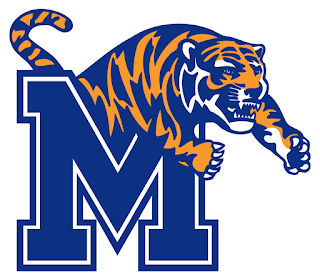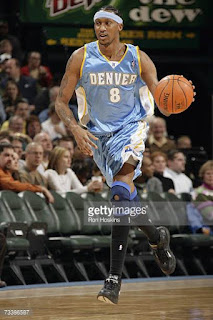Dwight Hardy
St. John’s University
Dwight Hardy became known as the “Baddest Man on The Planet” during the 2011 season. Hardy’s cool influence helped a revitalized St. John’s program break a long, arduous NCAA tournament drought.
A dependable senior scoring guard and widely regarded as one of the best shooters in college basketball, Hardy left a legend in his hometown of New York.
The Bronx native’s pattern of heroics under pressure restored credibility to St. John’s in basketball-crazed New York and beyond.
During a handful of dizzying games, Hardy provided deft shooting down the stretch and carried the team through tense moments.
Hardy’s nifty, twisting game-winning in layup through traffic resulted in the Johnnies’ 60-59 win over Pittsburgh at Madison Square Garden.
It was this acrobatic move, this Big East win, and this monstrous stage which propelled the Johnnies to the Associated Press’ Top 25 poll for the first time in nearly a decade. Veteran leadership and timely 3-point shooting helped Hardy steer St. John’s back into national prominence after a long hiatus.
Playing a brutal, unforgiving Big East schedule, SJU registered victories over the country’s elite in Duke, UCONN, and Notre Dame.
The 6-foot-2 guard torched UConn to the tune of 33 points, spearheading the Johnnies to a pivotal upset of the eventual NCAA champion. After coming off the bench as a junior, Hardy seized the leadership reins under Steve Lavin.
A bigger stage typically equated in a bigger performance from Hardy. He averaged 20.4 points and shot 50+ percent from the field in five games against top-10 teams.
Hardy averaged 18.3 points per game on the season, winning over a Garden crowd that had been aggressively searching for a homegrown basketball savior after an agonizing fall from grace.
Hardy had a tryout with the then-New Jersey Nets and was at one point a considerable NBA draft prospect. Indicative of the inexact science and pure dice shoot that is the NBA draft beyond the first round, Hardy ultimately went undrafted.
The Bronx native would ultimately sign several lucrative contracts overseas, prolonging his unpredictable basketball journey.
Hardy’s offensive exploits continued during his career over the waters. He was named MVP in the Italian 2nd Division after averaging 22 points to spearhead Pistoia Basket. He later signed to play in the first Division, where he registered his presence as a sharpshooter for Sididigas Avellino. Hardy went on to play in Turkey. He is currently with Istanbul-based Galatasary S.K. of the Turkish Basketball Super League. Hardy tuned up his game while under Chaney at the Patterson School (N.C.).
Jeremy Hazell
Seton Hall University
Oftentimes in recruiting, players end up picking a school which best green-lights their style of play.
For 6-foot-5 sharpshooter Jeremy Hazell, rather obscure and underrecruited out of Harlem, this was certainly the case with Seton Hall. Sold on his offensive promise, SHU was willing to fully utilize the various scoring gifts Hazell brought.
Known as the “Cab Driver” in New York City streetball circles, Hazell was first discovered by Seton Hall assistant coach Dermon Player during a street tournament.
During his illustrious stay at Seton Hall, Hazell left his imprint as one of the program’s most thorough scoring threats. He eclipsed the 2,000 point scoring milestone, creating havoc due to his length and versatility.
Firing in from way, way downtown and well beyond NBA 3-point territory, Hazell was a consistent high scorer during one of the most memorable epochs of Big East history. During that era, the Big East was the most formidable conference in the country.
Multiple Big East teams landed at No.1 in the national rankings, with dieseled-up athletes and surefire NBA prospects spread across rosters throughout the conference. Hazell was the featured scorer on a rugged Seton Hall team defined by tough, hard-nosed New York and New Jersey recruits assembled by Player and then-coach Bobby Gonzalez.
In Hazell, Gonzalez and the Pirates had a reliable four-year player. His scoring capabilities, underscored by deadly 3-point shooting, was a major source in breaking open games and throttling opponents with back-burning onslaughts.
Hazell averaged 18.8 points in four sturdy years, with a career-high of 23 PPG as a sophomore and 20 PPG as a junior.
Hazell helped post three out of four winning seasons while entertaining a national schedule rife with heavy hitters and nationally televised games. Hazell’s teams registered a 53-43 record during his final three seasons.
Turning up his defensive presence allowed Hazell to taste a cup of dark roasted coffee with the Phoenix Suns.
He played one season with their NBA Developmental league affiliate, the Bakersfield Jam. Hazell additionally played in Spain’s hyper-competitive Liga ACB in Spain.
At age 31, Hazell is currently playing in the LBA league in Pisaro, Italy.
Hazell is the quintessential Chaney type recruit. Hazell arrived at the doorstep with a wealth of potential, despite his exclusion from the mainstream recruiting market. In assessing his game, Chaney found an unheralded kid who could thrive if molded in the correct fashion.
With one year of prep, Chaney’s system helped empower Hazell’s scoring aptitude while fully utilizing the tools he had to offer.
In simulating the collegiate experience and the demands of being a Division-I athlete, The Patterson School positioned Hazell for the transition to high-level Big East hoops.
Hazell was especially devoted to his physical development while in a distractions-free environment in pin drop quiet Lenoir, N.C.,
He gained much-needed upper body strength and diversified his toolbox as a scorer. His work rate and added development were key components, solidifying Hazell’s status as a late-bloomer recruit on the high-major market.
Hazell started on the second team but soon found his way to meaningful minutes with Chaney’s elite team, where he supplied immediately energy as a kickout shooter off the bench.
Hassan Whiteside
Marshall
Miami Heat
Of the 17 NBA draft picks Coach Chaney has nurtured the development of, few stories tell like Hassan Whiteside’s. A 7-foot, 265-pound behemoth, Whiteside endured an unpredictable city-to-city journey ride before skyrocketing to prosperity with the Miami Heat.
The nomadic start to Whiteside’s professional career included stints in the NBA Development league as well as China and Lebanon. Then, seemingly overnight, Whiteside was plucked from obscurity. His rapid evolution as a quick-hit sensation for a Miami Heat team in the midst of a Lebron James hangover led him to signing a $98 million dollar contract in the summer of 2016.
Against the Chicago Bulls, Whiteside vaulted into national prominence with a “Triple Dozen” performance of 14 points, 13 boards, and 12 blocked shots. He became the fourth player in the last 25 years to record such a stat line. His monumental 12 blocks also put him amongst elite company, as he became the first player since the late and legendary Monute Bol (a menacing shot blocker at 7-foot-7) to collect 12 blocks in 25 minutes off the bench. With the hype seeming like overkill, Whiteside continued to produce extravagant, unprecedented numbers.
He scored 24 points on scalding 12-for-13 shooting during a loss to the Minnesota Timberwolves, grabbing 20 boards as well. Whiteside’s wild path to NBA stardom was not short-lived. During the 2015-16 season, Whiteside became just the seventh player in NBA history to record multiple triple doubles of points-rebounds-blocks.
He turned in a stat line of 19 points, 17 rebounds, and 11 blocked shots during a 98-95 defeat of the Denver Nuggets. Later on in the season against the Indiana Pacers, Whiteside became the quickest Heat player to the 1,000 rebound milestone. He attained such an unthinkable feat in just 95 games, a pace which shattered that of all-time bigs Shaquille O’Neal and Alonzo Mourning.
Whiteside averaged 17.0 points and 14.1 boards in 2016-17. In three NBA seasons, Whiteside has averaged a double-double with 13.6 points and 11.4 boards. Not bad for a kid who endured several setbacks before eventually finding a permanent home on the world’s most competitive stage.
He’s shot the rock at a sublime 58.5 percent over the past three seasons. Few could have envisioned a historic impact of this magnitude.
During his time under Chaney at The Patterson School, Whiteside helped the program to an overall record of 34-2 and no.1 national ranking. Chaney helped nurture the development of Whiteside and Deandre Kane, who wound up at Marshall alongside Whiteside under then-coach Donnie Jones.
Shawne Williams
Memphis
NBA
Perhaps the most notable page of Williams’ well-traveled NBA career occurred in one of the biggest markets the NBA has to offer: New York City. A kickout shooter and deadeye 3-point shooter on a revamped Knicks team, Williams was a supplementary scorer to Amar’e Stoudemire. The Knicks overcame a disastrous start, forging an identity and pumping glimmers of hope inside a seemingly left-for-dead Madison Square Garden.
With Williams locked in as consistent role player in a Raymond Felton-fueled offense, the Knicks snapped a long and mentally taxing playoff drought stretching all the way back to the 2003-04 season.
Williams was part of a four-man recruiting class that Chaney sent to Memphis under then-coach John Calipari. Williams starred on Chaney’s historic Laurinburg Prep team of 2004-05, which capped off a record year with a 95-83 defeat of Hargrave Military Academy in Wayne Otto’s U.S. Prep National Championship in North Carolina. This team chased history and set unprecedented marks in various categories.
This team featured 17 different leading scorers and 15 Division-I players total. They pounded teams by a 40-point average margin of victory, playing in unison and surrendering individual totals for team glory.
This Laurinburg team ascended the rankings in a hurry, defeating national powers such as Bridgton Academy, Notre Dame Prep, St. Thomas More, Winchendon, Hargrave Academy, and several other notable hoops breeding grounds.
The team grabbed serious headlines, appearing in SLAM Magazine and Sports Illustrated for their unrivaled mark in the prep history books. The team committed less than nine turnovers per game, had just five games decided by under 20 points, and shot a robust 80+ percent from the foul line.
The 6-foot-8 Williams authored an instant impact under Coach Cal at Memphis, averaging 13.2 points and 6.2 rebounds to lead Conference USA freshmen in both categories.
Williams maximized his potential and draft stock during the Conference-USA tournament, elevating with the stage of play and putting up 18.0 points and 6.7 rebounds, en route to tournament MVP honors. Selected with the 17th pick of the 2006 NBA draft, Williams’ NBA career has included stops in Los Angeles, Miami, Milwaukee, Detroit, and Dallas.
Jordan Hill
Arizona
NBA
After missing his entire junior season of high school basketball, Hill essentially made up for lost time during his one year with coach Chaney at The Patterson School. Flanked by high-end talent and entertaining national championship expectations, Hill raised his game and built up a pack of interior moves. Playing on instinct and also becoming more refined with a back to the basket game, Hill lived up to the lofty expectations initially foreseen in him.
Pushed mightily every day and rapidly expanding his skill-set, Hill became a high-efficiency threat and necessary presence on the glass.
While isolated in an environment which emphasized constant commitment to his craft and academics, Hill developed a feel for the steady discipline require at the next level of play.
The experience helped him assimilate to the challenge of playing under legendary Lute Olsen at Arizona. As a junior with the Wildcats, Hill averaged 18.3 points and 11.0 rebounds, earning a third team All-American nod.
His production around the rim was best evidenced by his field goal percentage—57.8 percent. This number catapulted him to the all-time charts, as he left the program as the fifth all-time leader in this particular category.
Pegged as a lottery pick, Hill was the eighth overall pick in the 2009 NBA draft by the New York Knicks. His NBA career has included stops in Houston, Los Angeles, Minnesota, and Indiana. He penned a two-year, $8 million contract with the Lakers, soon becoming synonymous with hustle and the hard, gritty basketball the once prosperous organization was in dire need of.
Dermarr Johnson
University of Cincinnati
NBA
As a National Player of the Year and McDonald’s All-American, Dermarr Johnson was a transcendent talent. At 6-foot-9, the wiry and versatile guard was one of the first players of his height to pull off playing the guard position. Laced with deft and dizzying handle and sound in the up-tempo attack, Johnson’s game extracted comparisons to Penny Hardaway and Magic Johnson during his storied career under Chaney at Newport Prep in Maryland.
Around that time, Johnson’s versatility and ability to play off the ball sparked heavy expectations for a prep-to-pros career. Since few had witnessed a player of his size with a guard-geared mentality, Johnson garnered national fanfare.
His shooting ability rendered him a matchup headache. His ability to take advantage of mismatches when smaller guards where sticking him drew the ire of coaches across the country. With a proficient jumper and beyond the arc game, he was capable of spreading out the offense and pulling bigger defenders away from the rim. He evolved into a nightmarish enigma for foes, an absolute chore to stay in front of. Considering his length, wingspan and athleticism in the open court, Johnson’s performances were never short of entertainment value.
Johnson developed a guard’s game early, only working at ball-handling and constantly getting shots up. When he underwent a massive growth spurt and eventually shot up to 6-foot-9, he saw no need to alter his role. Coaches were content with letting him play on the perimeter, the best natural fit for a player of his capabilities. Sending him inside to do work in the post would eliminate all which he could offer the backcourt.
Partly at the urging of Sonny Vaccaro and partly at then-coach’s Bob Huggins formulated plot to put some muscle on Johnson’s rail-slim arms, Johnson opted for a year at Cincinnati. Johnson averaged 12.8 points in his lone collegiate year, forming a radiant troika with Kenyon Martin and New York City point guard Kenny Satterfield.
Johnson eventually found his way to the Atlanta Hawks, where he served as a role player his first two seasons. His career was marred by a debilitating car accident, originally regarded as career-threatening. Johnson bounced back, however, sticking around in the league and playing for the Denver Nuggets, New York Knicks, and San Antonio Spurs.
While Johnson’s talent never totally panned out as anticipated in the NBA, he prolonged his journey during a long career overseas. Johnson’s trials over the waters included stops in Colombia, Italy, Saudi Arabia, the Dominican Republic and a number of other destinations over the waters. Even well into father time, Johnson has proven has flair for the game hasn’t dwindled.
This much was evident as recently as last summer, when Johnson was plying his trade for “City of Gods” in the $2 million The Basketball Tournament.











